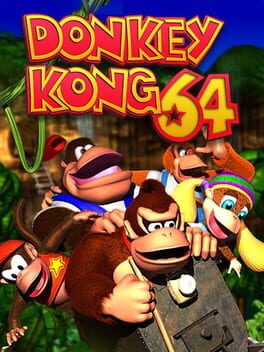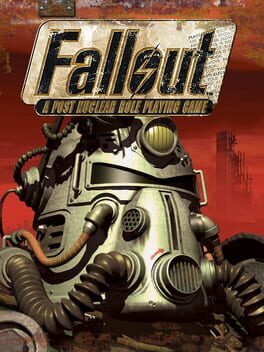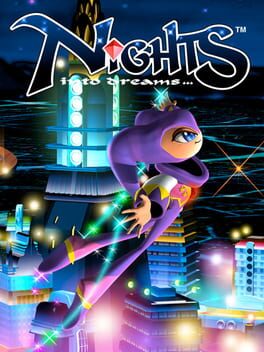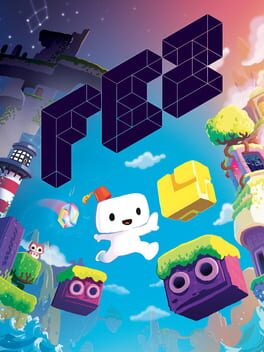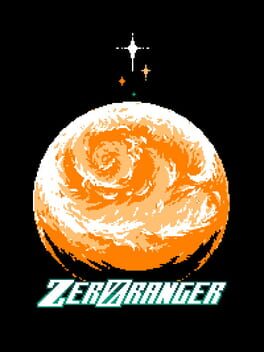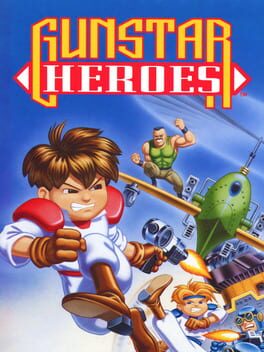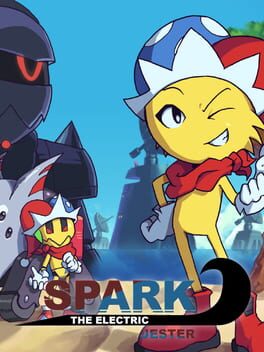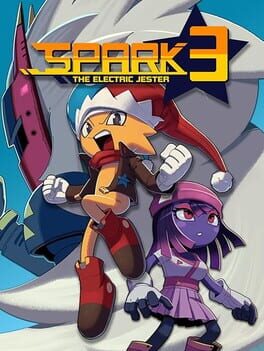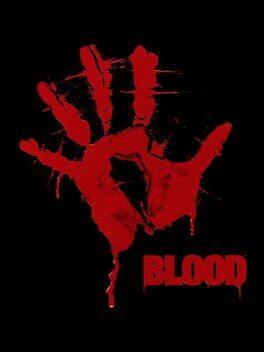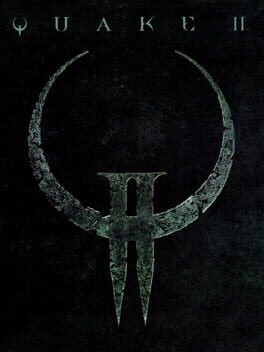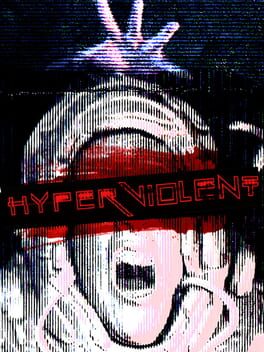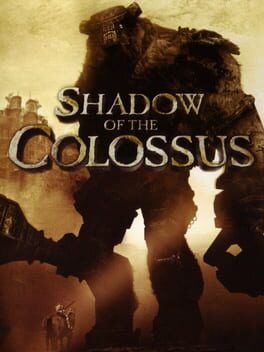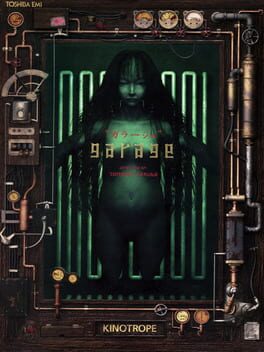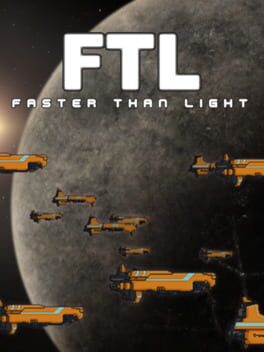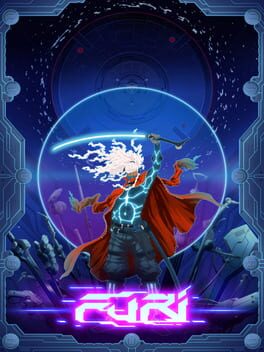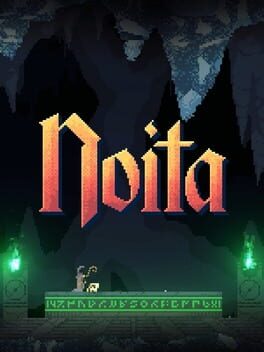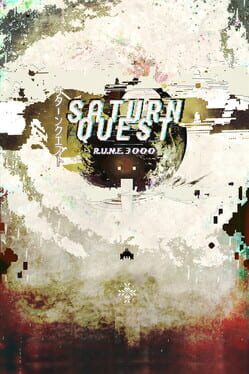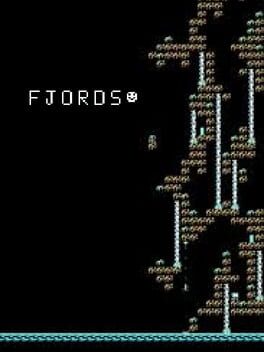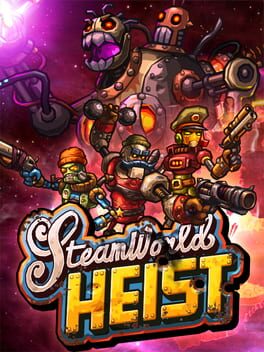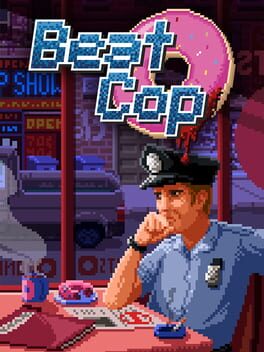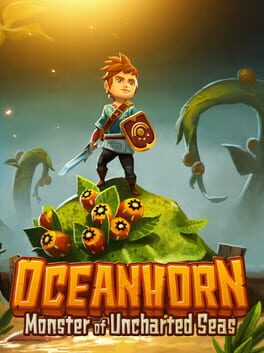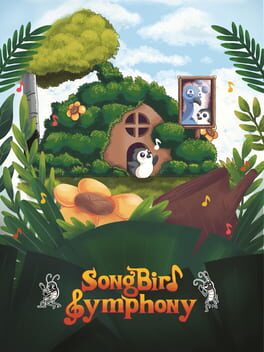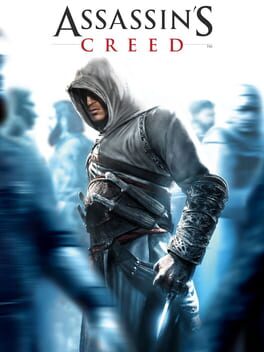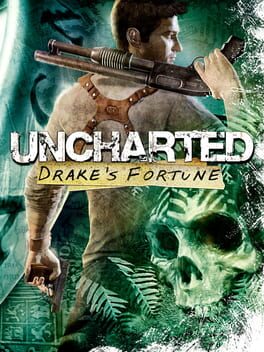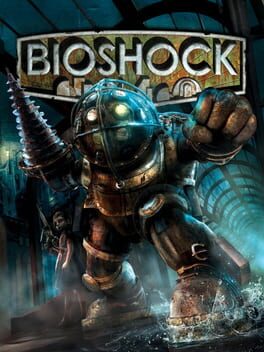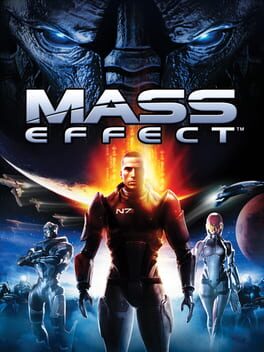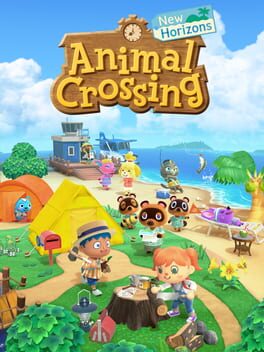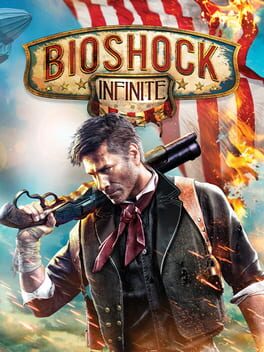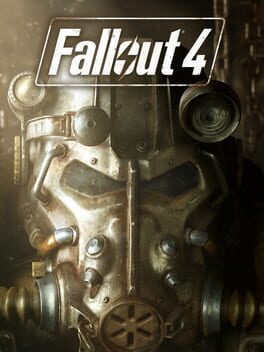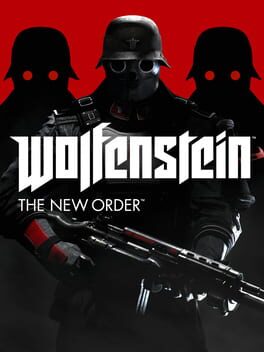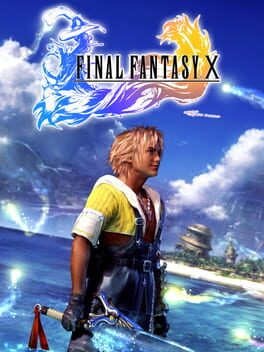Scamsley
277 reviews liked by Scamsley
Black Mesa
2015
they 'fixed' the MP5 and shotgun so instead of needing to rely on a whole arsenal of explosives, traps and weirdo guns you can just handle every single fight with two guns
they 'fixed' the HECU marines so instead of erratic freaks they just kinda stand around and impose a health tax if you look around a corner
they 'fixed' xen by making it look like it was trending on art station and replacing all the weird cool levels with Half-Life 2 puzzles for some godforsaken reason
they 'fixed' the HECU marines so instead of erratic freaks they just kinda stand around and impose a health tax if you look around a corner
they 'fixed' xen by making it look like it was trending on art station and replacing all the weird cool levels with Half-Life 2 puzzles for some godforsaken reason
Donkey Kong 64
1999
There is a tendency when dunking on Bethesda games, to criticize them from the lens of their failure to be like other RPGs- The Witcher 3 is more cinematic and refined, Baldur's Gate 3 more densely written, Fallout 1 more actually good, so on and so forth. The truth is that Bethesda games suck much more tragically and pathetically on their own terms than in comparison to other games, Todd Howard who began his career with monumental works of termite art in the end forsook the dream of the Bethesda game. The dream of the bethesda game was always to create a holodeck, a simulation for you to inhabit totally- 'Why the hell would I pick up a spoon?' someone asks, perfectly reasonably expecting game mechanics to exist for gameplay reasons, but it's just that you can pick up spoons because it's something a person is able to do. Personally I think this dream is perhaps misguided, but nevertheless they pursued it, which is admirable in its own right.
"With this character's death, the thread of prophecy is severed. Restore a saved game to restore the weave of fate, or persist in the doomed world you have created."
The message you receive upon killing a crucial NPC points towards the commitment towards the holodeck dream, it will continue on even if you totally fuck up, and indeed there are generally ways around the death of those crucial NPCs provided you understand the simulation.
And fear of people misunderstanding the simulation is what drove bethesda to make many crucial NPCs invulnerable in Oblivion, you never know when you're actually in a simulation or not anymore, even as the NPC AI had become much more sophisticated with schedules, likes, dislikes and habits, the places you could engage shrunk, and then even the ambitious NPC AI in subsequent games was stripped back for ever more presentable and simpler systems, to the point of Starfield doing deliberately what Morrowind had done out of technical limitations 20 years prior: 24/7 vendor NPCs with no schedules, likes or dislikes, who exist only in service of the player.
But maybe most telling of all, was that in Fallout 4 they decided that the player need a good reason to pick up a spoon.
"With this character's death, the thread of prophecy is severed. Restore a saved game to restore the weave of fate, or persist in the doomed world you have created."
The message you receive upon killing a crucial NPC points towards the commitment towards the holodeck dream, it will continue on even if you totally fuck up, and indeed there are generally ways around the death of those crucial NPCs provided you understand the simulation.
And fear of people misunderstanding the simulation is what drove bethesda to make many crucial NPCs invulnerable in Oblivion, you never know when you're actually in a simulation or not anymore, even as the NPC AI had become much more sophisticated with schedules, likes, dislikes and habits, the places you could engage shrunk, and then even the ambitious NPC AI in subsequent games was stripped back for ever more presentable and simpler systems, to the point of Starfield doing deliberately what Morrowind had done out of technical limitations 20 years prior: 24/7 vendor NPCs with no schedules, likes or dislikes, who exist only in service of the player.
But maybe most telling of all, was that in Fallout 4 they decided that the player need a good reason to pick up a spoon.
Banjo-Kazooie
1998
The anti-Mario 64: Banjo's moves are entirely situational, self-explanatory, and devoid of momentum. Collecting jiggies usually boils down to solving a simple contextual puzzle rather than utilizing any kind of creative platforming. As a result, there's hardly a difficulty curve or any implicit progression... but it doesn't matter, because Banjo-Kazooie's total mastery over its own strengths and weaknesses means it's fully confident in being utterly carried by its level design. The every-nook-and-cranny mindset is the very foundation of the collectathon, and yet I've never seen it done better than in the game that more or less created the genre. Despite how little there is to the platforming, every in-game structure feels multipurpose. Anything that can be jumped on top of also hides a collectible behind or underneath it, any piece of architecture has several entrances that you have to consider. This philosophy peaks in Mad Monster Mansion, where not only does the main building have multiple ways into multiple rooms on multiple floors, but the hazardous thorn bushes outside double as pathways after receiving Mumbo's transformation. If anything, Kirkhope's soundtrack doesn't get enough credit for establishing this sense of interconnectivity. Plucky platforming tunes seamlessly transition into Rare's signature unexpectedly moody ambience, impossible to imagine the game without. The more unsung hero is the game's usage of verticality. Nearly every level has some kind of player-led buildup to reaching the area's summit, eventually bestowing a way to scout out points of interest that you might have missed and, more importantly, personal satisfaction. The end result is a series of beautifully concise dioramas, each taking about an hour to fully complete and best experienced one-a-day. The well-meaning but far too convoluted Click Clock Wood is the only world I'd label as less than 'great,' but it's not enough to put a significant damper on the rest. With how lukewarm I've been on nearly every recent 3D platformer, I'd been beginning to fear that my love for them might've left me, but all it took was a classic to remind me it's still far and away the best genre. Maybe not as mindblowing as it was in the 90s but no less of a supremely enjoyable experience. Bring 'em back, Phil.
High on Life
2022
Fallout
1997
One really cool trend we saw back in the last decade is formerly underground franchises breaking into the mainstream. Persona, Yakuza, Monster Hunter, Fire Emblem, and Xenoblade all had dedicated followings before but are now bringing in more fans than ever. Among these is Balan Wonderworld which blew people away with its frenetic action, deep characters, and philosophical storytelling. Its success led to many people checking out the game’s predecessor, Nights: Into Dreams. And let’s just say that the early installment weirdness is strong with this one.
The biggest issue with Nights could be summed up in four words: Creative ideas, Weird execution. Nowhere is this more evident with the game’s main protagonist Nights. Nights is a character we are supposed to straight up despise. You’re supposed to see them as a mass murdering psychopath. They’re supposed to be the embodiment of the player who kills all the clearly sapient enemies to power up and show what that person who actually be like. In other words, they were the original Chara. Heck, they even got the same pronouns. The game really wants you to hate them and constantly has the other characters as well as the very narration itself call them out.
(Clip of Elliot saying “Full of bloodlust, as always.)
But the problem is that nearly every one of Nights’s murders are completely justified. The game seems to forget the fact that Nights is a soldier fighting a war where the other side wants to destroy seals to release an eldritch abomination upon the world. Also, the enemy soldiers are almost always portrayed as nothing more than simple video game enemies for you to kill. As mangled as the phrase has become, Nights is just doing their job.
The one silver lining to all this is that Yuji Naka learned from his missteps. Balan Wonderworld did a far better job at linking story and gameplay together while Shot2048 gave us a far superior villain protagonist. I’m DestroyerOfMid and I’ll see you in the comments… again.
The biggest issue with Nights could be summed up in four words: Creative ideas, Weird execution. Nowhere is this more evident with the game’s main protagonist Nights. Nights is a character we are supposed to straight up despise. You’re supposed to see them as a mass murdering psychopath. They’re supposed to be the embodiment of the player who kills all the clearly sapient enemies to power up and show what that person who actually be like. In other words, they were the original Chara. Heck, they even got the same pronouns. The game really wants you to hate them and constantly has the other characters as well as the very narration itself call them out.
(Clip of Elliot saying “Full of bloodlust, as always.)
But the problem is that nearly every one of Nights’s murders are completely justified. The game seems to forget the fact that Nights is a soldier fighting a war where the other side wants to destroy seals to release an eldritch abomination upon the world. Also, the enemy soldiers are almost always portrayed as nothing more than simple video game enemies for you to kill. As mangled as the phrase has become, Nights is just doing their job.
The one silver lining to all this is that Yuji Naka learned from his missteps. Balan Wonderworld did a far better job at linking story and gameplay together while Shot2048 gave us a far superior villain protagonist. I’m DestroyerOfMid and I’ll see you in the comments… again.
I had no idea what this game was before I started, and after finishing, I still don’t know. It’s not just me either, it seems like this is a pretty common reaction from people, it’s so unique in every facet of its design that it almost defies categorization. To put it in its simplest terms, imagine a sidescroller where the stage would fit perfectly on the face of a cylinder, you can go up and down to the edges of the screen, but the stage loops on itself as you freely fly from side to side. The goal is to collect 20 blue orbs while accumulating points from picking up items and doing aerial acrobatics. You have to reach a certain point threshold to unlock new levels, but past that, my comprehension fails me. There’s an odd system to breed dream creatures and affect their moods to create new ones, which then affect the music and landscape of the stage you hatched them in, but it’s entirely optional and I didn’t even notice until doing research afterwards, along with many other little hidden mechanics. The deeper you go the weirder it gets, and the bright circus aesthetic can be almost sinister when laid on top of systems and symbolism outside the realm of comprehension. While surrealism is usually pretty concurrent with horror, the game seems to capture a surreal form of joy instead, fitting for a game that focuses on dreams, but I mostly found it off-putting. The gameplay itself is decent enough, the flight has a nice momentum to it and looping around to pick up gems can be satisfying, but this is the first time where I have to dock a game points for feeling uncomfortable. It all works fine, it’s imaginative, but… it just doesn’t feel right. I guess that means I have to give it the points back for effectively using surrealist imagery to speak to the subconscious, and that’s not something I thought I would ever have to say about a Sonic Team game made for kids. Even though it defies traditional description, it can at least be remembered as Sonic Team’s most imaginative attack on my psyche yet.
Fez
2012
If I were to take FEZ at face value, then my thoughts would be pretty brief: it’s a damn good puzzle-platformer game with a hella strong core, taking a 2D interconnected world and twisting it and turning it to achieve greater heights. It’s never particularly difficult or challenging, but it’s fun; reaching new areas is intriguing, and getting the cubes is ultra satisfying, and in a way, I’m kinda glad it never tries to have really hard sections or some sort of final challenge, because even tho I’m sure that’d be cool, and I would really love to see this dimension-shifting mechanic taken up a notch, I also think the way that it is makes the world feel much more organic than it otherwise would, and sells the idea that this is an experience more about the act of exploring than traversing perilous sections.
However, taking FEZ at face value is impossible, or at least it is for me. FEZ is the jumps and beautiful sounds and sights of its adorable ruined worlds as much as it is the secrets that lie within.
I have talked about my fascination with the ancient world and the mysticism and desire to learn that comes with simply witnessing it, whether it is the remnants of a bygone civilization or the remains of an animal that walked the earth hundreds of millions of nights ago. FEZ has a ton of the former and not much of the latter, but what it shares with both of those is that feeling.
The feeling of stumbling upon something you shouldn’t even be able to understand, of seeing the carvings in the wall and the very code that holds reality together and finding answers behind it—it’s satisfying to beat a platforming challenge and get to a chest with a key in it, but it’s equally, if not even more fulfilling, to fit pieces of the puzzle hidden yet in plain sight.
Spirals of purple marble endlessly repeating, secrets to be revealed by feathered friends or written outside of the game itself, tongues that can be completely translated, and moments like what happened to me where I solved a puzzle by complete chance by just fucking around moving some blocks; connecting the deepest secrets of the world through the addition of the Anti-Cubes alone was an amazing decision. Even after pulling apart layers on top of layers to get some of them, I still feel I’ve barely scratched the surface of what’s in here, what can be found, like an excavation that just has begun.
Every step is a new discovery, and making it to each of the main hub worlds opens a new horizon, from the oldest depths to the stormiest peaks, and it’s all so… tranquil. The wonderful, beautiful pixel art mixed with the outstanding OST, it compels you to keep going, to see juuuuuuuuuuuuuuuust a lil’ more, to keep going a bit further, only to be met with a teleporter, going back to the hub, and repeating that process over and over again. It says a lot when, in the year 2024, a game that uses QR codes or 4th wall breaks to solve puzzles doesn’t make me groan; on the contrary, in fact, it manages to fit into that secret uncovering process tremendously well.
There are pieces that don’t quite fit: the fact that quite a few of those more hidden puzzles end up being a combination of LT and LR inputs is a bit disappointing and misses the mark on what other Anit-Cube quests accomplish so well, and there’s some even weirder stuff like annoying void squares that appear randomly and aren’t anything more than a dumb annoyance or how entering doors may just crash to desktop randomly, which isn’t part of the experience, mind you, and it takes you completely out of it sometimes. It only happened once to me, but this being a problem present years later is a bit disappointing, to be honest.
It's a cube quest that a few times can be a little disappointing or frustrating, but that’s something I can easily look past when the rest of it is so stellar that the act of opening doors is the most exciting fucking thing ever. It invites to wonder and imagine, and there’s so much to be solved and found that, after hitting credits, I feel like the exploration can go even further… Oh, and also, Gomez’s design and name is the best fucking thing ever and there’s no contest, the most basic-ass lil white dude and I love it, look at his smile!
Adventure is out there, and it carries mysteries with it, it’s about time someone solves them.
However, taking FEZ at face value is impossible, or at least it is for me. FEZ is the jumps and beautiful sounds and sights of its adorable ruined worlds as much as it is the secrets that lie within.
I have talked about my fascination with the ancient world and the mysticism and desire to learn that comes with simply witnessing it, whether it is the remnants of a bygone civilization or the remains of an animal that walked the earth hundreds of millions of nights ago. FEZ has a ton of the former and not much of the latter, but what it shares with both of those is that feeling.
The feeling of stumbling upon something you shouldn’t even be able to understand, of seeing the carvings in the wall and the very code that holds reality together and finding answers behind it—it’s satisfying to beat a platforming challenge and get to a chest with a key in it, but it’s equally, if not even more fulfilling, to fit pieces of the puzzle hidden yet in plain sight.
Spirals of purple marble endlessly repeating, secrets to be revealed by feathered friends or written outside of the game itself, tongues that can be completely translated, and moments like what happened to me where I solved a puzzle by complete chance by just fucking around moving some blocks; connecting the deepest secrets of the world through the addition of the Anti-Cubes alone was an amazing decision. Even after pulling apart layers on top of layers to get some of them, I still feel I’ve barely scratched the surface of what’s in here, what can be found, like an excavation that just has begun.
Every step is a new discovery, and making it to each of the main hub worlds opens a new horizon, from the oldest depths to the stormiest peaks, and it’s all so… tranquil. The wonderful, beautiful pixel art mixed with the outstanding OST, it compels you to keep going, to see juuuuuuuuuuuuuuuust a lil’ more, to keep going a bit further, only to be met with a teleporter, going back to the hub, and repeating that process over and over again. It says a lot when, in the year 2024, a game that uses QR codes or 4th wall breaks to solve puzzles doesn’t make me groan; on the contrary, in fact, it manages to fit into that secret uncovering process tremendously well.
There are pieces that don’t quite fit: the fact that quite a few of those more hidden puzzles end up being a combination of LT and LR inputs is a bit disappointing and misses the mark on what other Anit-Cube quests accomplish so well, and there’s some even weirder stuff like annoying void squares that appear randomly and aren’t anything more than a dumb annoyance or how entering doors may just crash to desktop randomly, which isn’t part of the experience, mind you, and it takes you completely out of it sometimes. It only happened once to me, but this being a problem present years later is a bit disappointing, to be honest.
It's a cube quest that a few times can be a little disappointing or frustrating, but that’s something I can easily look past when the rest of it is so stellar that the act of opening doors is the most exciting fucking thing ever. It invites to wonder and imagine, and there’s so much to be solved and found that, after hitting credits, I feel like the exploration can go even further… Oh, and also, Gomez’s design and name is the best fucking thing ever and there’s no contest, the most basic-ass lil white dude and I love it, look at his smile!
Adventure is out there, and it carries mysteries with it, it’s about time someone solves them.

